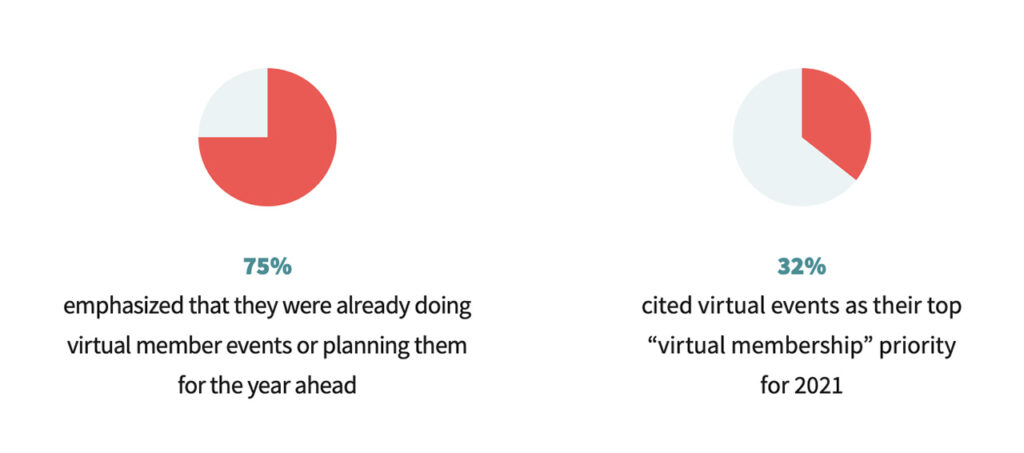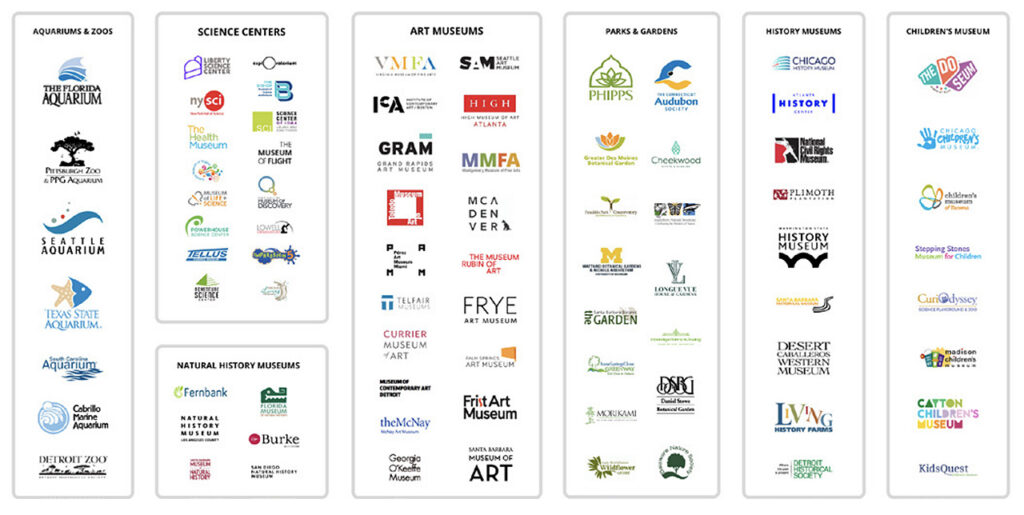The past year fundamentally changed what it meant to be a museum member. Gone were the perks of free admission, cafeteria discounts, and sneak peeks of upcoming special exhibitions; in their place, cultural organizations pivoted to offer members new digital experiences in keeping with a year of living virtually.
Cuseum has been attuned to these shifting practices for the past year, hosting a weekly webinar series on the subject and now releasing a report that draws from more than 100 membership leaders to offer a clear picture of how 2020 changed the museum membership landscape. Here, Jing Culture & Commerce offers three takeaways from the report (download here), in conversation with Cuseum’s Maddie Taylor.
The growth of virtual member events in 2020

Cuseum’s survey of 100 membership leaders found a vast majority had plans to launch or had launched virtual member events. Image: Cuseum
As the world acclimatized to an ever-extending period of digital living, physically closed museums embraced virtual events to engage membership through lectures, classes, and casual meet-ups. Cuseum found 75 percent of museums had already been planning such events for 2020, with 32 percent citing virtual events as a top “virtual membership” priority in 2021.
On the museum side, these events proved manageable at a time of strained resources — particularly for those already organizing events for general audiences. For members, the informality and intimacy of events was greatly appreciated and holds long-term value for those who want to support the institution but may not be able to visit frequently.
How can cultural institutions maintain momentum once in-person entertainment opportunities return and digital fatigue sets in?
Maddie Taylor, Cuseum: Many institutions are struggling to differentiate themselves online and overcome Zoom fatigue. Museums have found success by offering holistic remote experiences, rather than just screen time, by going beyond “virtual events” in what might better be described as remote experiences. Traditional virtual events include a panel of speakers on a video conference; a remote experience often makes use of tangible components that can elevate engagement and connection. For example, “Cocktails with the Curator” events that include an at-home drink recipe are more engaging than an online art history lecture.
Making membership cards digital

In 2020 alone, a wide swathe of cultural organizations — from High Museum of Art to the Seattle Aquarium — have launched digital membership cards. Image: Cuseum
Mobile, time and cost-efficient, and environmentally friendly, digital membership cards took off in 2020 and is a change that is here to stay. Adopting digital membership cards was a response to being short-staffed and out-of-office and Cuseum notes many museums have switched up to 90 percent of members onto digital cards. Members, for their part, are satisfied with no longer having a card fulfillment delay.
Long-term, this shift can be used as part of a broader shift to inform and engage members digitally with benefits including using push notifications, enabling contactless entry, and easily extending memberships.
How can cultural institutions maximize the benefits of digital membership cards?
MT: Cultural organizations are able to maximize the benefits of switching to digital when they take a digital-first approach and migrate a high number of their members to digital membership cards. This allows institutions to achieve optimal efficiency in their membership operations and fully leverage digital membership cards for direct communication with members. For any change like this, there are three key components: establish a vision for your digital future, leverage your communication channels effectively to keep your valued members apprised of the transition, and allow time to reach digital maturity.
Creating the virtual membership level
Demand for virtual content soared under lockdown, exceeding the expectations of many cultural professionals, prompting many to launch, or consider, a membership level catering specifically for virtual access. Cuseum found 17 percent have either launched a virtual membership scheme or are planning to in the coming year — 12 percent stated doing so was a top priority.
This membership is a natural extension of the increased production of digital content and can help deepen ties with geographically distant audiences. In 2020, many were reluctant to charge for virtual content given such offerings were in the process of being developed and fine-tuned; in the coming years, however, it may well become a stable source of revenue.
How do you see virtual membership levels developing?
MT: The future is bright for virtual membership levels. This may seem to be a short-lived COVID-19 invention, but virtual membership has the potential to solve several more long-standing challenges in the cultural sector. Even before the pandemic, museums struggled to engage geographically widespread audiences and many visitors were often one-time tourists. The existence of virtual membership levels has created an opportunity to convert such tourists into digital evangelists.



